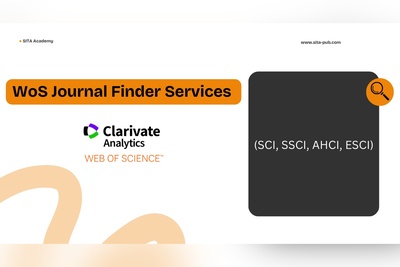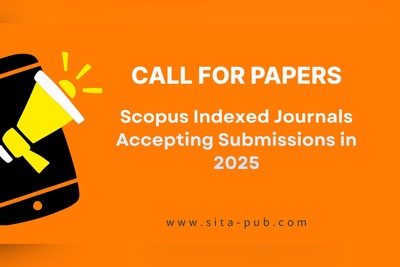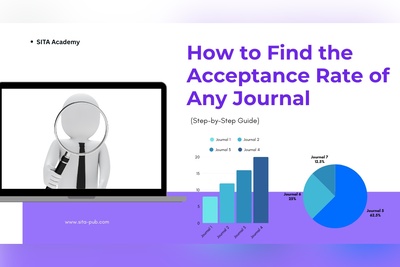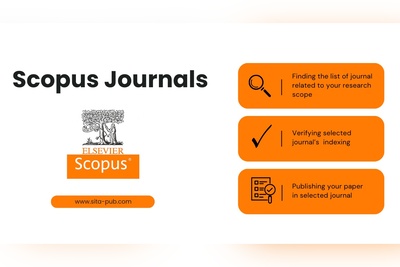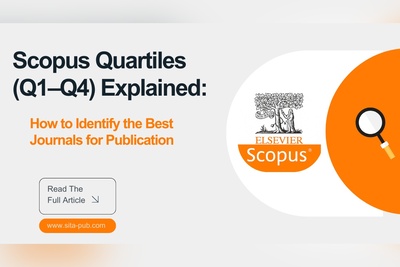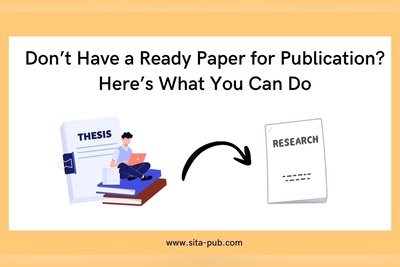How to find Scopus journals that accept submissions
Looking for Scopus journals that accept submissions? Discover practical ways to find Scopus-indexed journals.

One of the biggest challenges is finding the right journal that not only fits the research topic but is also actively accepting submissions. Choosing wisely can save months of wasted effort on rejections or predatory journals.
In this article, we will explore practical ways to identify Scopus journals that accept submissions, including free online tools, strategies to check indexing, and how research centers offering publication support services (like SITA Academy) can make the process easier and more successful.
1. Using the Official Scopus Website
One of the most reliable methods is through Scopus’ own database.
Steps:
1. Visit the Scopus Source List on Elsevier’s website.
2. Use the search function to filter journals by:
Subject area (e.g., Engineering, Medicine, Social Sciences)
Title, ISSN, or publisher
Country or language
3.Verify the journal is active and accepting submissions by checking its homepage.
4. Review scope, guidelines, and recent issues to ensure your research aligns.
Practical Tip: Always cross-check the journal’s official site to confirm submission instructions and open calls for papers.
2. Searching with the SJR (SCImago Journal Rank) Website
Another excellent tool is SJR (https://www.scimagojr.com/).
Steps:
1. Open the SJR site.
2.Use filters to search by:
Subject area and category
Country of publication
Quartile ranking (Q1, Q2, Q3, Q4)
3. Once you identify a suitable journal, click its profile to find the official website link.
4. On the journal’s site, check for submission guidelines and whether they are currently accepting manuscripts.
Practical Tip: SJR provides quartile ranking (Q1–Q4), which helps researchers target journals according to prestige and institutional requirements.
3. Checking Publisher Websites Directly
Most major publishers like Elsevier, Springer, Taylor & Francis, and Wiley host multiple Scopus-indexed journals.
Steps:
1. Go to the publisher’s website.
2. Search within their “Journals” section using keywords from your research area.
3. Look for notices like “Now accepting submissions” or “Call for papers.”
4. Always review the author guidelines and scope of research topics.
Practical Tip: Many publishers offer journal finder tools where you paste your abstract and keywords, and the tool suggests suitable journals.
4. Using Journal Finder Tools
Several tools exist to help match your paper with relevant journals. Examples include:
Elsevier Journal Finder
Springer Journal Suggester
IEEE Publication Recommender
Steps:
1.Enter your paper’s title, abstract, and field of study.
2. The tool suggests journals with a high probability of acceptance.
3. Cross-check the results with Scopus indexing to avoid predatory or outdated journals.
Practical Tip: Always double-check the journal’s indexing status using Scopus’ source list before submission.
5. Calls for Papers and Conference Proceedings
Sometimes journals publish special issues or accept papers via conference proceedings.
Search for “Scopus-indexed journals call for papers” in your field.
Many conferences publish accepted papers in Scopus-indexed journals or proceedings.
Submitting to conferences may fast-track your publication if the proceedings are indexed.
6. Using Research Centers and Publication Support Services
Finding the right journal can be time-consuming and confusing, especially for new researchers. This is where research centers offering publication support become very valuable.
At SITA Academy, for example:
Your paper is analyzed carefully to determine its field, novelty, and quality.
A customized list of Scopus journals is prepared based on your paper’s subject and budget.
You receive journals with a high probability of acceptance (over 90%).
Additional support like formatting, editing, and submission assistance can be provided.
This ensures your paper is submitted to the right journal from the start, saving time and increasing your chances of success.
7. Practical Tips to Avoid Predatory Journals
Unfortunately, many fake journals claim Scopus indexing. To avoid them:
Always check the journal’s title/ISSN on the Scopus Source List.
Avoid journals with unrealistically fast acceptance (e.g., within a week).
Verify the publisher is reputable.
Check recent publications and see if they are visible in Scopus.
Conclusion
Finding Scopus journals that are actively accepting submissions requires a careful, systematic approach. From using Scopus and SJR databases to publisher websites and journal finder tools, there are multiple reliable methods to identify suitable journals.
However, for researchers who prefer expert guidance and higher chances of success, research centers provide professional support. By analyzing your paper and budget, SITA Academy can recommend Scopus journals with over 90% acceptance probability, ensuring your research finds the right platform.
Whether you choose to search independently or seek expert assistance, the key is to verify indexing, check submission guidelines, and align your paper with the journal’s scope. With the right preparation, publishing in a Scopus journal can be a smooth process.
